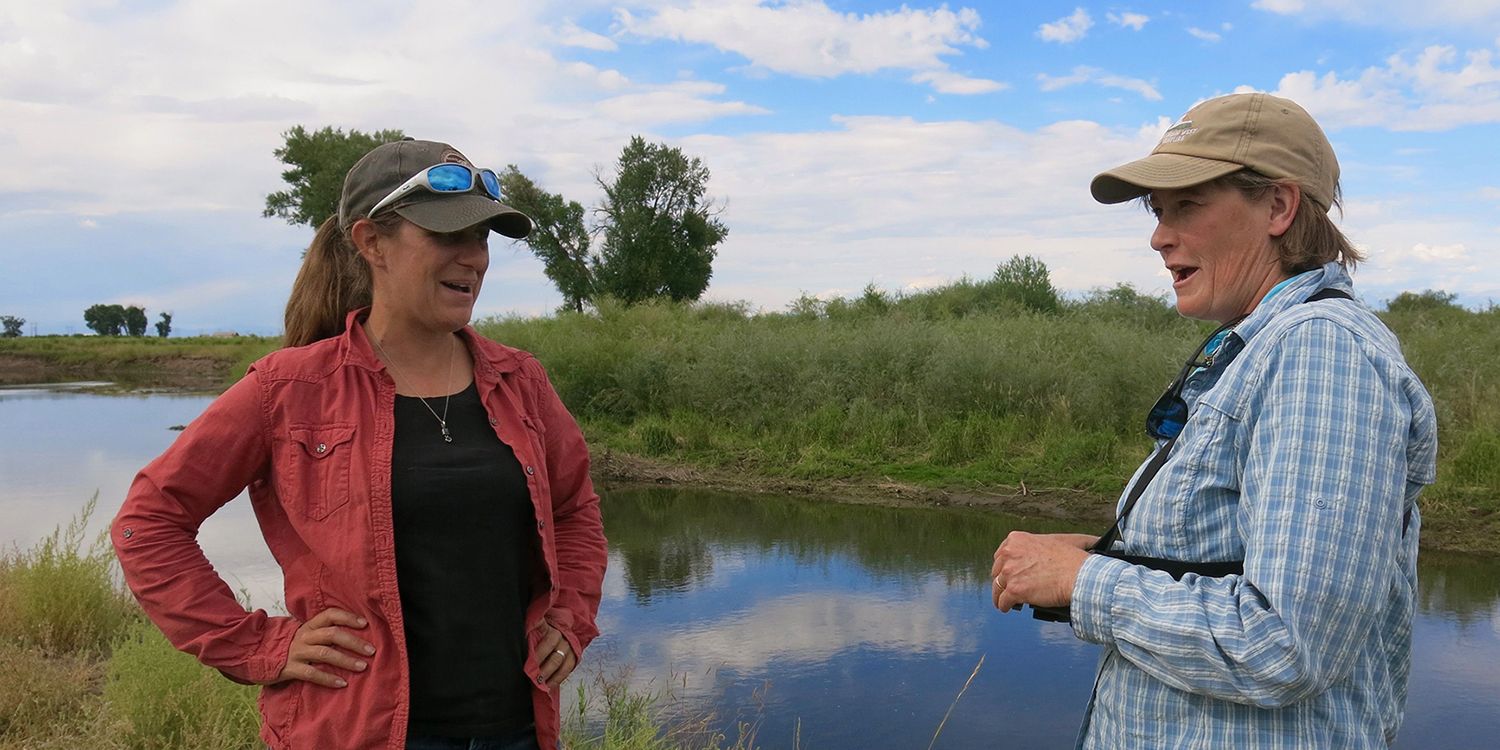Wetlands in the San Luis Valley are a vital part of our landscape. In addition to their important hydrologic functions, they sustain the abundant ducks and geese that migrate and breed here, along with so many other birds and animals, including the iconic Sandhill cranes that mark the coming of spring and fall here. But wetlands, by definition, need water. Water is scarce here and the valley’s aquifers have declined. So what is the status of our region’s internationally important wetlands? And what effect is that having on the wildlife that depend upon them?
The answers to these questions are the subject of an upcoming talk at Adams State University during Earth Week, entitled, “Wetland and Riparian Resources in the SLV: Declining Resources, Impacts to Wildlife, and Recommendations for the Future.” Free and open to the public, the presentation will be held at 6 p.m. Thursday, April 25, in Porter Hall Room 130 on campus. Biologists Cary Aloia and Jenny Nehring will share the findings of the newly completed San Luis Valley Wetland and Wildlife Conservation Assessment.
The Assessment details the history of changes in wetlands and riparian areas on the Valley floor. It draws upon historic information, research, and new technologies to identify limiting resources for wetlands and what is needed to sustain habitats. This Assessment involved local, regional, and state staff and support from the U.S. Fish and Wildlife Service, Bureau of Land Management, Colorado Parks and Wildlife (CPW), Natural Resource Conservation Service, U.S. Forest Service, Ducks Unlimited, Intermountain West Joint Venture (IWJV), National Park Service, and many other individuals and organizations across the SLV.
Overall, the results are sobering. They indicate that the Valley’s wet acres have declined by over 50 percent since the 1980s. The Assessment also found that private lands provide a majority of the wet acres over all time periods and seasons, with early spring migration (February and March) habitat being limited prior to the irrigation season and fall wet acres being the most limited. In addition, it reveals that public lands like the Baca and Monte Vista National Wildlife Refuges have had the greatest declines in wet acres.
While the findings show serious challenges ahead, associated with the Valley’s water and aquifer depletion issues, the Assessment aims to guide cooperative conservation goals for monitoring, management, and land conservation for the region’s natural resource agencies and organizations. Its recommendations for future conservation include improving partnerships between the natural resource agencies to try and meet limiting resource needs, to prioritize ways to help improve habitat, and to prevent further declines on public lands. It also suggests the need for further analysis of IWJV GIS data, and recommends finalizing “scorecards” for conservation organizations to use in prioritizing their work.
The presenters are local biologists, Jenny Nehring and Cary Aloia of Wetland Dynamics, who performed the San Luis Valley Wetland and Wildlife Conservation Assessment. In addition to the many partners who participated in the study, it was funded by the Rio Grande Basin Roundtable through the Colorado Water Conservation Board and by the SLV Conservation and Connection Initiative.
Jenny Nehring earned a bachelor’s degree in environmental biology from the University of Colorado, Boulder and a master’s degree in biology at Middle Tennessee State University and has made a profession of bird and wildlife conservation, monitoring and management. Having lived and worked in the San Luis Valley for 21 years, she has worked with nearly every natural resource agency or organization here on wildlife related projects.
Cary Aloia has worked throughout the SLV, Intermountain West, and US over the past 17 years. She focuses on providing landscape and site-specific management plans, monitoring, and promoting and coordinating partnerships in wetland/riparian conservation. Aloia has been involved in the management and monitoring of CPW State Wildlife Areas in the SLV for over 10 years and has worked with many state, federal, regional, and national organizations and groups as well as many private landowners to further wetland conservation. She also serves as chair of the SLV Wetland Focus Area Committee.
Please join us to learn about the importance of the Valley’s wetlands and how to work together to conserve and restore them. The April 25th talk is part of a series of water presentations at Adams State University, hosted by the Salazar Rio Grande del Norte Center. Cohosts also include ASU’s EARTH Group and the Department of Biology and Earth Sciences. For more information, please contact Rio de la Vista, director of the Salazar Rio Grande del Norte Center, at 719-850-2255 or riodelavista@adams.edu.



